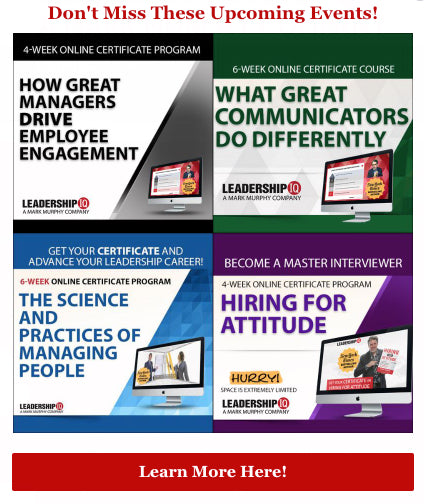Quiz: What's Your Style of Change Management?
Change is hard. Whether you’re facing a big change like reinventing a business model or something simple like the day paychecks come out, change is difficult. One study found that 70% of change efforts fail. Big or small, change efforts seem to run into the same brick walls over and over again. By understanding the basic phases of change and the psychological state of your employees, you can prepare your culture for change and avoid common pitfalls of failed change efforts.
There is a myth about change that has destroyed many leaders’ careers. When managing change, many leaders mistakenly believe expediency is the best approach. They think, “If we move quickly we’ll be better off during the change management effort. We’re not going to waste time preparing our culture for change. We’re just going to jump in and make the change!”
Unfortunately, about a week into the change effort, they realize they should have prepared their culture for change because they don’t have any support. There is a big difference between leading a parade and getting run out of town. If you don’t take the time to prepare your culture for change you won’t have the basic support needed to go through with a change effort. You may get a couple of people to buy into the change, but then there will be a tidal wave of support against you. Until you have confirmation that 70% of your culture is prepared for the change management effort, you are not ready to start taking action.
The challenge in preparing any culture for change is that employees tend to cling to the present state (where they are now). One of the biggest obstacles in getting folks to move with the change into the future state (where you want them to be) is that the present state is usually fairly comfortable. Unfortunately, getting them to move is not as simple as asking nicely. In order to get folks to move from the present state to the future state you need to understand the three stages I call the “Why, Where, and How” of change.
Why Do We Need To Change?
If people don’t understand why they need to change, they won’t change. This is why, ironically, it’s often easier to lead a change management effort in a failing company than in a successful one. If the company is heading towards bankruptcy, it’s a lot easier to explain why we need to change (e.g. “we’ll literally be bankrupt if we don’t change!”). But in successful companies, employees will often say, “Why do we need to change if we’ve been so successful thus far?”
Often the first thing leaders need to do to prepare their culture for change is to start a fire. In other words, make the present state significantly less comfortable. Maybe it’s as simple as pointing out that there are coming threats to our current success. Maybe it’s pointing out that we’re not really as perfect as we think we are.
If the present state were less comfortable, folks would be a lot more likely to jump from the present state to the future state. As the present state gets hotter and a little uncomfortable, folks will begin to move away from the heat. They won’t necessarily be excited about it shouting, “I can’t wait to jump over to the future state! I bet it’s fantastic!” But, if you set a fire, folks will be much more likely to move from the present state to the future state.
Where Is This Change Taking Us?
The second way to prepare your culture for change is to make the future state look a lot better than the present state. Are we going somewhere good? Is the future state more attractive than the present state?
People don’t need every tiny detail about the future state, but they do need a rough idea of where we’re going. They need to be able to visualize that there is a better place waiting for us out there and they need to be able to imagine themselves in that place.
How Will We Get There?
The third way to prepare your culture for change is to give employees a sense of just how it is they will get from the present state to the future state. One of the roadblocks to change is the gap between the present state and the future state. To employees, that gap might seem insurmountable. Build a bridge; make it easy to move from the present to the future state.
If folks understand why they need to change and where they’re going, they might still freeze up if they can’t begin to imagine how they could ever make the journey. So leaders need to show that while there’s a big journey ahead of us, we can break it down into bite-sized steps and take them one at a time.
Change management isn’t always easy. But a great many of the mistakes that get made stem from neglecting one of these three stages. If people know why they need to change, where they’re going, and how they can get there, they’re going to be a lot more likely to buy in and join you on the journey.









